Best Weight Training Method to Develop Power

When most athletes think about training for power, their mind usually shoots right to plyometrics and jumping. Over the years, I’ve discovered a few weight training methods to develop power. There’s one in particular that I believe is the best weight training method to develop power.
And I’ve been using this method HEAVILY with high school athletes all the way to the pros… With incredible results.
And I want to share the intricacies with you.
The INs and OUTs.
So that you can harness the power of this method for yourself.
The Problem With Traditional Weightlifting for Athletes
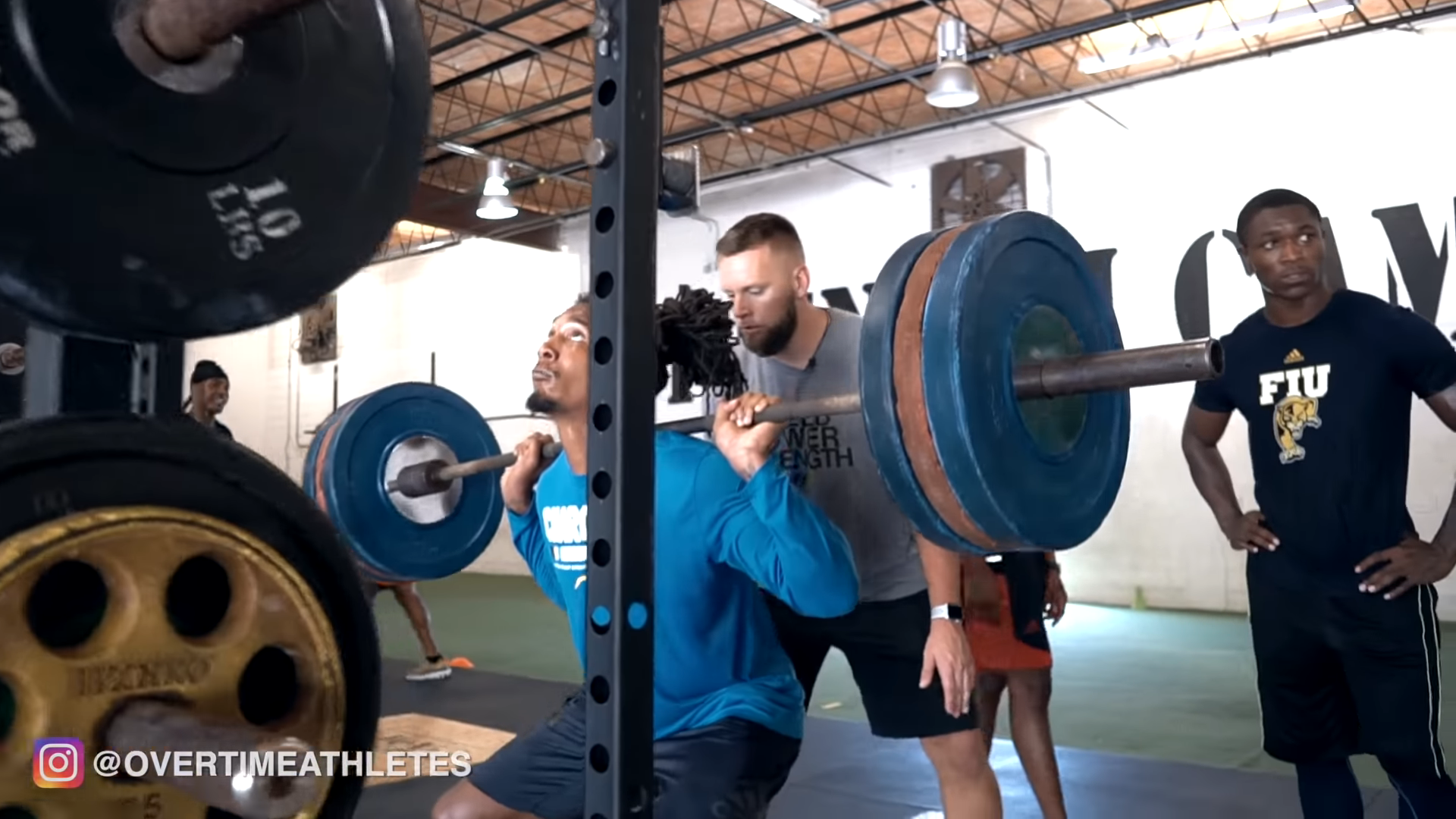
Traditional compound lifts and weight lifting methods are great for athletic development. Don’t get me wrong.
But, there comes a time when an athlete needs to shift his focus. Shift his focus from getting a handle on form and adding a foundation of strength to moving heavy weights fast.
Here comes the issue.
When you’re jumping and sprinting, you’re accelerating through the entire movement.
However, when you’re deadlifting or squatting, there are portions of the movement that are easier than others. This is due to a lessened tension on the athlete’s muscles.
An example of this is towards the “lockout” position of a squat. As you approach the top of a squat, the movement becomes easier and there is less of a need to accelerate.
We need a way to accelerate through the entire movement so that we get more carryover to the field.
Accommodating Resistance
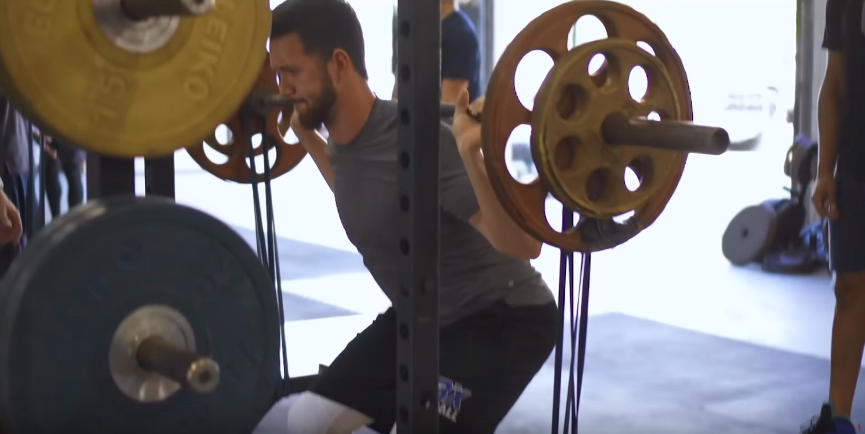
Accommodating resistance is exactly how it sounds. It’s basically a training method that accommodates for certain ranges of motion that are easier during a certain movement.
For example, during a squat, the bottom position is the most difficult to get out of.
As you move higher and higher through that range of motion, the movement becomes easier.
Naturally, an athlete will accelerate faster out of the bottom position of a squat and begin to decelerate as he reaches the top position. When you add the accommodating resistance, you force yourself, or your athlete, to accelerate through the full range of movement.
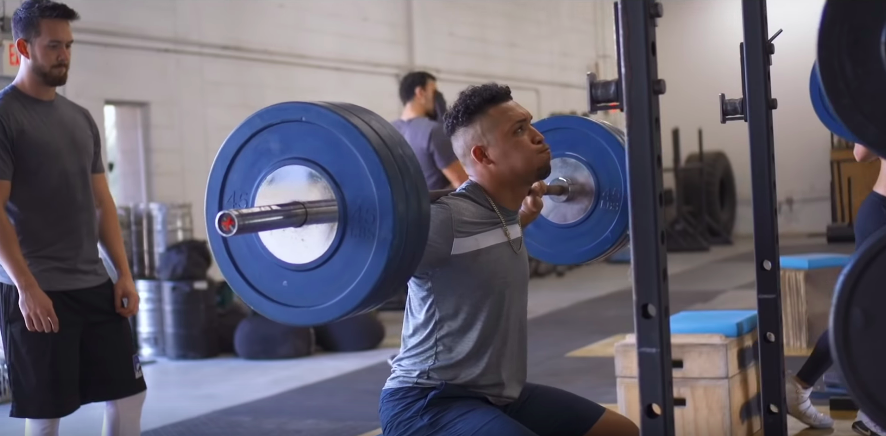
Again, this carries over to sport because when an athlete sprints or jumps, they accelerate through the top range of motion. They get full hip extension. So, we want to eliminate the need to decelerate through that top range of motion when weight training.
How to Use Accommodating Resistance
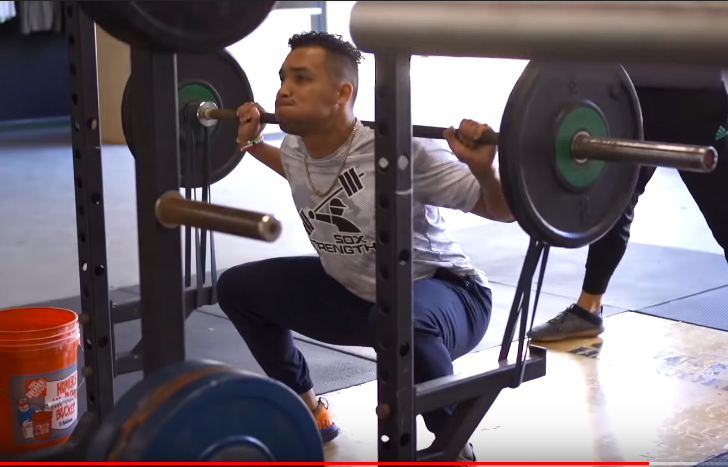
There are many lifts you can use accommodating resistance for. The main movements I use accommodating resistance with are the bench press, trap bar deadlift, squat, and sometimes the reverse lunge.
Whatever movement I use accommodating resistance with, I usually like to decrease the load. I’ll go anywhere from 40-60 percent of an athlete’s one rep max, while adding either bands or chains.
As far as reps go, I’ll use 1-5 reps and anywhere from 5-10 sets depending on the amount of reps I prescribe.
The higher the amount of sets, the lower the amount of reps.
I usually use accommodating resistance when I’m peaking an athlete. This usually occurs in the last block of their training when I’m concentric focused.
Chains or Bands for Accommodating Resistance
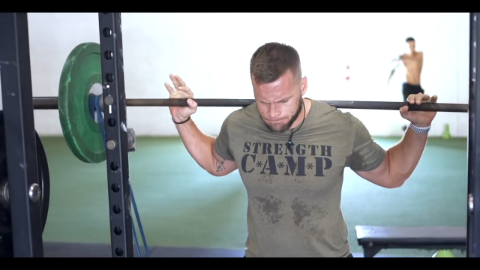
Chains add an element of stability for accommodating resistance. As such, my methods with them vary.
If I’m using chains, I like to use higher reps and lower sets. This is to give the athletes full stability stimulus.
As far as power and performance goes, I’m more of a fan of using bands.
This is because at the bottom position of the movement, the amount of resistance gets lighter, and at the top the bands add resistance.
And again, this forces the athlete to accelerate through the full range of motion, instead of just the lower portion.
This will create power gains that carry over to the field.
More Weightlifting Methods for Power
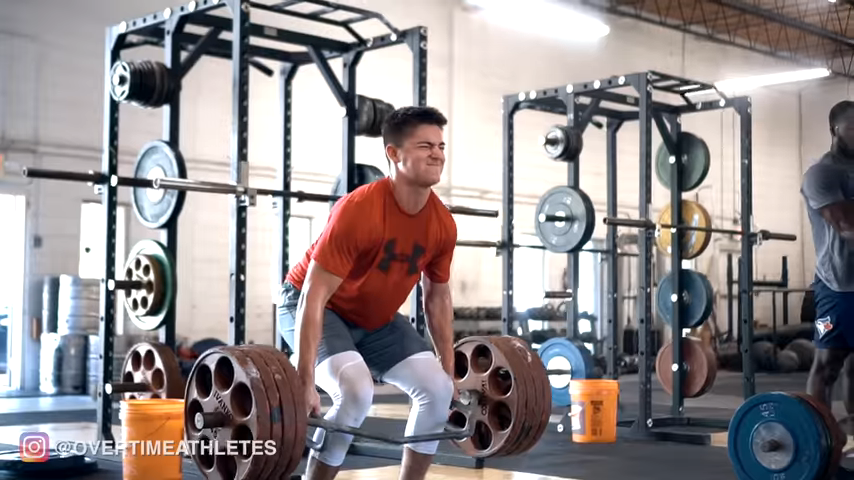
If you want to learn an EXPLOSIVE weightlifting method for power… One that helped me achieve a 44-inch vertical… Check out my FREE Advanced Strength Series.
Inside you’ll discover:
- The strength training method that helped me develop a 44 inch vertical jump
- How working limited ranges of motion on your strength lifts will lead to more athleticism
- When you should move weights slow for more athleticism and when you should move them fast
And a whole bunch more.
Click the Link Below to Get In for Free